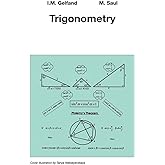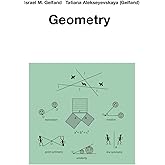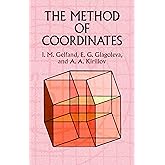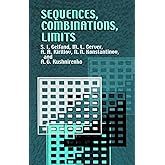
Download the free Kindle app and start reading Kindle books instantly on your smartphone, tablet, or computer - no Kindle device required.
Read instantly on your browser with Kindle for Web.
Using your mobile phone camera - scan the code below and download the Kindle app.

Follow the authors
OK
Kiselev's Geometry, Book I. Planimetry Hardcover – September 1, 2006
- Print length248 pages
- LanguageEnglish
- PublisherSumizdat
- Publication dateSeptember 1, 2006
- Dimensions8.27 x 5.51 x 0.39 inches
- ISBN-100977985202
- ISBN-13978-0977985203
The Amazon Book Review
Book recommendations, author interviews, editors' picks, and more. Read it now
Similar items that ship from close to you
Editorial Reviews
Review
Beware the code words "quantitative reasoning" often bandied about by the secret enemies of geometry who would suppress that subject like some sort of pagan religion or foolish luxury. In fact, most high schools, for various reasons, bypass rigorous geometry for weak calculus; as a result, many college students now hit a brick wall trying to follow any precise logical argument, or worse, construct one. Plato warned us! In the book by Kiselev, translator Givental, himself a very distinguished mathematician, aims to rescue geometry for our time by bringing into English a classic of Russian pedagogy, a book with a track record extending back more than a century. Indeed, under the Soviets, an era of prodigious mathematical achievement, Kiselev's book actually attained the status of stable, meaning it was the entire nation's official book for classroom use, and it held that status for decades, remaining popular still. SUMIZDAT (the name evidently a portmanteau of sum and samizdat) calls itself a publisher promoting nonsense-free mathematics and science curricula. Givental's excellent and concise Linear Algebra and Differential Equations (2001), albeit published by the AMS, also nicely fits this category. Certainly library shelves must make a place for Kiselev's classic! By D. V. Feldman, University of New Hampshire. From November'07 issue of --Choice (book review magazine for academic libraries)
I highly recommend (...) Kiselev's Planimetry. I can claim that no geometry textbook in history of Western civilization was printed in more copies than Kiselev. By Alexandre Borovik, the author of ''Mathematics under the microscope" --Homeschoolmath blog.
The book under review is an expanded translation of a unique phenomenon in the Russian mathematical literature. First published in 1892 by A. P. Kiselev as Elementary Geometry, by 1940 it underwent more than 40 revisions and eventually became a measuring rod for geometry education in Russia against which all other textbooks had to be judged. If nothing else, this book's staying power may serve as an enticement to anyone interested in, or involved with, high school geometry. Its introduction to the English speaking student and teacher is thus more than welcome. The effort by A. Givental, who translated the book from Russian and combined pieces of the many editions of the original, deserves wholehearted recognition and sincere praise. (...) The book was originally written in a clear, no-nonsense style which has been polished over its many editions and revisions. The style was well preserved in the translation. There is nothing in the book that will even occasionally distract from the subject. (...) In the Translator's Foreword, Professor Givental mentions three virtues of a good textbook (precision, simplicity, conciseness) formulated yet by Kiselev himself, and adds a fourth one competence in the subject. Thinking specifically of Kiselev's Geometry, one other feature must be mentioned: autonomy of the discourse. Every textbook is created for a particular audience which is usually characterized by the level of preparedness to absorb the material, both in terms of the requisite knowledge and the ability to do so. The requirements are usually set up in the introduction and are commonly violated in the text. This is either done tacitly or with a reference to the imposed limitations on the size or the scope of the book. One salient virtue of Kiselev's Geometry is that, throughout, the author remains faithful to his intended audience, viz., middle and junior high school students taking up geometry for the first time. (...) The full review is found here --Mathematical Association of America Online Book Reviews. --Mathematical Association of America Online Book Reviews
--Mathematical Association of America Online Book Reviews
The book under review is an expanded translation of a unique phenomenon in the Russian mathematical literature. First published in 1892 by A. P. Kiselev as Elementary Geometry, by 1940 it underwent more than 40 revisions and eventually became a measuring rod for geometry education in Russia against which all other textbooks had to be judged. If nothing else, this book's staying power may serve as an enticement to anyone interested in, or involved with, high school geometry. Its introduction to the English speaking student and teacher is thus more than welcome. The effort by A. Givental, who translated the book from Russian and combined pieces of the many editions of the original, deserves wholehearted recognition and sincere praise. (...) The book was originally written in a clear, no-nonsense style which has been polished over its many editions and revisions. The style was well preserved in the translation. There is nothing in the book that will even occasionally distract from the subject. (...) In the Translator's Foreword, Professor Givental mentions three virtues of a good textbook (precision, simplicity, conciseness) formulated yet by Kiselev himself, and adds a fourth one competence in the subject. Thinking specifically of Kiselev's Geometry, one other feature must be mentioned: autonomy of the discourse. Every textbook is created for a particular audience which is usually characterized by the level of preparedness to absorb the material, both in terms of the requisite knowledge and the ability to do so. The requirements are usually set up in the introduction and are commonly violated in the text. This is either done tacitly or with a reference to the imposed limitations on the size or the scope of the book. One salient virtue of Kiselev's Geometry is that, throughout, the author remains faithful to his intended audience, viz., middle and junior high school students taking up geometry for the first time. (...) The full review is found here --Mathematical Association of America Online Book Reviews
I highly recommend (...) Kiselev's Planimetry. I can claim that no geometry textbook in history of Western civilization was printed in more copies than Kiselev. By Alexandre Borovik, the author of ''Mathematics under the microscope" --Homeschoolmath blog
From the Back Cover
About the Author
Product details
- Publisher : Sumizdat (September 1, 2006)
- Language : English
- Hardcover : 248 pages
- ISBN-10 : 0977985202
- ISBN-13 : 978-0977985203
- Item Weight : 15.2 ounces
- Dimensions : 8.27 x 5.51 x 0.39 inches
- Best Sellers Rank: #1,224,769 in Books (See Top 100 in Books)
- #3,316 in Homeschooling (Books)
- #3,915 in Educational Certification & Development
- Customer Reviews:
About the authors

Discover more of the author’s books, see similar authors, read book recommendations and more.

Discover more of the author’s books, see similar authors, read book recommendations and more.
Customer reviews
Customer Reviews, including Product Star Ratings help customers to learn more about the product and decide whether it is the right product for them.
To calculate the overall star rating and percentage breakdown by star, we don’t use a simple average. Instead, our system considers things like how recent a review is and if the reviewer bought the item on Amazon. It also analyzed reviews to verify trustworthiness.
Learn more how customers reviews work on AmazonCustomers say
Customers find the book well worth their time and money. Opinions differ on the teaching technique, with some finding it logical and thorough, while others say it's inexcusable and too rigorous for modern high school students.
AI-generated from the text of customer reviews
Customers find the book well worth their time and money.
"Kiselev's Geometry Book 1 Planimdtry was well worth my time and the money I spent for it...." Read more
"...I gave the book 3 stars because it is well worth reading, NOT as a first book and NOT without a qualified tutor that could spot errors and to assist..." Read more
"...No scratches or marks of any kind whatsoever. Good book, basic geometry as it's finest...." Read more
"This book is the perfect book for my purpose. I am working with teens who missed out on earlier geometry basics...." Read more
Customers have mixed opinions about the teaching technique of the book. Some mention it's logical and thorough, while others say it's too rigorous for modern high school students.
"...this skill because it is visual and tangible, and meanwhile it is systematic and rigorous...." Read more
"...If a teacher is present to fill in the gaps this is bad teaching technique but an issue a GOOD teacher could catch ...." Read more
"...The mathematics is stripped bare, a logical and thorough progression, without any of the sidebars, illustrations, and contemporary examples that..." Read more
"...covers its topic (plane geometry), but, sadly, it's too rigorous for modern high school students. And it's pretty dry...." Read more
-
Top reviews
Top reviews from the United States
There was a problem filtering reviews right now. Please try again later.
Fast forward to the time when my child started grade 8 in Canada, to my great disappointment, the geometry education in North America has deteriorated to merely some formulas for simple calculations and sporadic geometrical facts without justifications. At the same time, the math textbooks are stuffed with some strange "innovations": mindless tessellation, confusing figure rotation, invalid "proof" by measurement, etc.
After shaking my head too many times, I decided to take matters into my own hands and to introduce my child to the beauty of Euclidean geometry. After browsing a few geometry books, I fell in love with this book. It has contents and styles almost identical to what I learned before. I even found many problems I solved decades ago. (In his preface, Prof. Givental mentioned that Kiselev had a great influence on geometry education in Eastern Bloc and China.) We had a slow start but we managed to finish the book in one year. For each worked theorem in the book, I explained the proof to my child first, and then asked her to read it and finally prove it in her language. This way, she studied and proved every worked theorem in the book. She also proved most of the proof problems and solved about 75% of the computation problems in the exercises. I am glad to see my child demonstrate modest mathematical maturity and write her reasoning like this: let ... since ... however ... therefore .... I also showed her how Euclid proved theorems in Euclid's Elements, and now she always ends a proof with "QED". Currently we are working on solid geometry using the sequel (Book II) to this book.
We learned the following proof techniques from this book: direct proof, proof by contradiction and contrapositive. (I taught her mathematical induction separately in algebra II later.) I skipped many construction problems due to time constraint and deferred locus problems to analytic geometry. I didn't use the sections on trigonometry and coordinates since they can be better treated in trigonometry and analytic geometry. I covered parallel lines prior to triangles following my principle that simple object (line) be introduced before complex one (triangle). In doing so, I had to make the initial part of the theorem for parallelism test an axiom, since its proof involves the properties of triangle. I also made the theorems for triangle congruence test (SSS, SAS and ASA) axioms because I am not fond of superimposing one figure onto another. We spent quite a lot of time on tangent to a circle (including internal and external common tangents), as tangent line is an important topic in analytic geometry and is closely related to limits in calculus. For a deeper understanding of the golden ratio, my child read several chapters in The Golden Ratio: The Story of PHI, the World's Most Astonishing Number by Livio. When dealing with the bisector of a triangle angle in the chapter of similarity, I introduced additional concept of dividing a segment internally and externally. For more proof problems, I supplemented this book with Challenging Problems in Geometry (Dover Books on Mathematics) by Posamentier and Salkind which is also exceptionally good. At the end of the course, to let her have a little bit taste of axiomatic system (for instance, the definitions of "point", "line" and "plane" are neither desired nor possible), I asked my child to read the first chapter in Introduction to Graph Theory (Dover Books on Mathematics) by Trudeau which is a delightful introduction to pure math (the first chapter itself is well worth the price of the book).
I have to mention that Prof. Givental's translation contains some typos (symbols, super/subscripts, and the section of the law of cosines). These typos are manageable if you read the book carefully.
In my view, the essence of math education is not about numeracy only, but more about abstract thinking and logical reasoning. This kind of ability is a true source of self-confidence (or "self-esteem" if I borrow the over-loved buzzword from our education system) for a young student. A student feels empowered when he/she is able to find out something previously unknown, using precise language along with existing facts. Euclidean geometry is the best way to teach a young student this skill because it is visual and tangible, and meanwhile it is systematic and rigorous. My own experience shows Euclidean geometry is more effective in this regard compared with algebra. Often in a challenging geometry problem, facing seemingly unrelated information, a student needs to connect given conditions to known facts, to explore different approaches, to rely on purely logical deduction, and finally to reach the goal and build chains of reasoning using mathematical language. Sounds like fashionable "Discovery Learning" or "Creative Thinking" or whatever fluffy mysterious educational philosophy? The biggest difference is that in Euclidean geometry a student is armed with established knowledge (definitions, axioms and theorems) and tools (logic and mathematical notations) in order to discover new knowledge, while the latest fads in math education have no real substance and thus bring a total failure to our next generation.
I am not mathematically inclined (my formal math education didn't go beyond calculus and linear algebra) and I don't expect my child to pursue a career in advanced math either. However, a solid foundation in elementary math (algebra I, plane geometry, trigonometry, algebra II, solid geometry, and analytic geometry - in the order of proper learning sequence explicitly taught by an experienced teacher in a systematic not a spiral way) is a major component of a well-rounded education and plays a significant role to ensure one's successful life. If you are determined and capable (proficient arithmetic and primitive algebra are all you need), study this book together with your child and show him/her the grace of Euclidean geometry. If you want to find a competent teacher for the subject it may be a challenge to do so. It is very likely many math teachers in North America never learned or understand Euclidean geometry, so your best bet may be a mathematician or a retired scientist/engineer. Another point is don't write the so called "two-column proof" in geometry promoted by many educational sources (including Khan Academy). Any proof in a respectable geometry book is always in paragraph. Actually, when I choose a geometry book, the first thing I check is "two-column proof". (For an algebra book, my blacklist includes the childish "guess and check", the laughable "FOIL method", the absurd "algebra tiles" and the silly "algebra scale/balance/balloon", among many anti-math "strategies" invented by educational "experts".) If a math book has any nonsense piece then I know the author must be an amateur or an "expert" and I reject it right away. I always tell my child that writing a proof is just like writing an interesting story - a story that can convince me what you say is true. And I don't want to read a "two-column story".
When I scanned this book to verify it would improve my understanding of geometry I was pleased to find on pages 230 through 231 the best consice explanation of a tiling proof for the Pythagorean theory shown in Figure 265 that eluded me for some time.
This book should be read by anyone who wants to improve their understanding of geometry. Thank you Alexnder Givental for job done well in adapting from Russian this book for the English speaking reader.
Unfortunately, common core and most other existing state standards screw up otherwise great books like this. These days, most geometry courses include too much material on co-ordinate geometry (useful in say the sciences at lower levels but not so useful for mathematicians and research scientists, especially when they have entire fields and courses dedicated to making everything co-ordinate-less), applications (again, leave this to the science courses. We do poorly in international rankings because we focus too little on learning the mathematical ideas), and misc. topics that get thrown in (e.g. the combined algebra and geometry courses now common in some districts).
This book stands out as one of the few remaining pure synthetic geometry textbooks. Synthetic simply refers to using axioms and definitions and proving theorems from them. Instead of calculations, the field, and this book, rely on logic. Every step must be and is justified. Classical proofs (alternative proofs are usually not given) are presented for all of the essential theorems, with none but the most specialized (usually contest and olympiad level material) left out. Note that this book only covers 2D geometry. For 3D geometry and vectors, use the second book, also by this author.
The book covers a bit of trigonometry (also detracting from the geometry course today, precisely because trigonometry is usually revisited in algebra II and precalculus, which causes unnecessary extra material in the geometry course and unnecessary and continual review in higher level courses), which is not sufficient for calculus but a good material and an excellent way to show some of the properties of similar figures, or in this case similar triangles. Pedagogically, all of the material is developed in a sound fashion with only the essential topics needed to flesh out the topic presented.
This textbook, though containing all the synthetic geometry the average high school student needs, CANNOT be used by itself in the high school classroom today as the focus in education has shifted from an understanding and appreciation of math for math's sake. As self-study material for the ambitious and mathematically inclined, however, there are few better introductions to synthetic geometry. This provides a strong foundation for a journey into olympiad level geometry if desired, though. The book is also good for experience with proofs, another topic which is slowly disappearing in all but its simplest form from high school curricula.
I like to show this book to possible math majors, because of the terseness of the book. Definition is followed by theorem is followed by proof is followed by corollaries, and then all of that is repeated. There is little fluff or motivational material, and there are not so much "examples" as there are proofs of smaller, insignificant (relatively speaking) theorems. Being able to trudge through such material is necessary for anyone who plans on taking higher mathematics, particularly anything above Calc I at the university level. For this reason, though, I would hesitate to recommend this as a self-study text to all but the brightest of students, and I would hesitate to use this in the classroom unless I knew all the students were taking wonderful notes.
The book covers the basics of Euclidian geometry and has plenty of exercises of different degrees of difficulty, as well as many proofs. It is meant to be a manual for grade 7-9 students but could be used by anyone who needs a thorough understanding of Euclidian geometry.
I think the title of the book is not relevant for searches, unless you know who Kinselev is, that is why I couldn't find it earlier.











